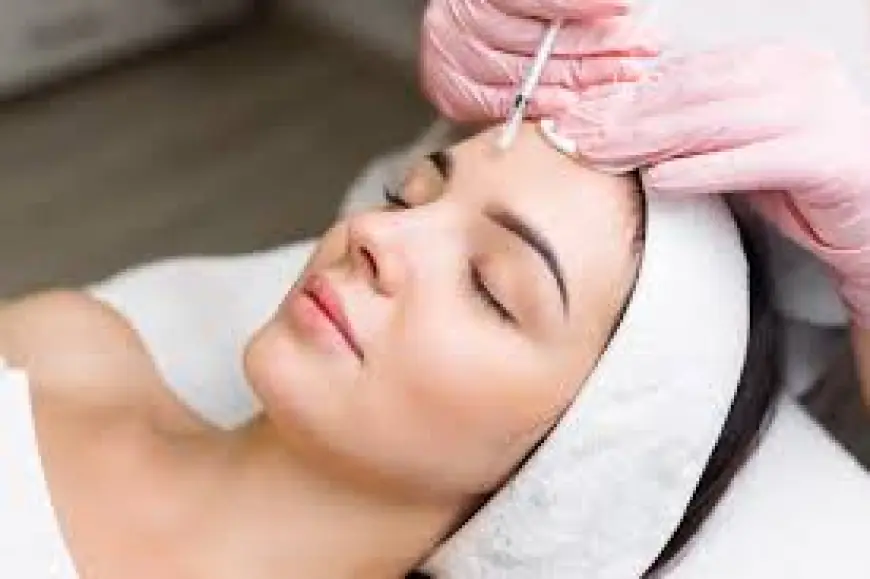Is Botox Safe? What Science and Experts Say in 2025

With cosmetic enhancements more accessible than ever, a growing number of people are asking: is Botox safe? Especially for those considering Botox injections in Riyadh, understanding current expert insights and scientific findings is essential. Here’s a comprehensive and stylish look at how safety is evolving in 2025.
Botox Safety: What Research Says:
A Strong Safety Profile:
-
Botox (botulinum toxin A) has an impressive track record, having been FDA-approved since 2002 and widely used worldwide. This long history underscores its safety when administered properly.
-
Meta‑analyses of randomized controlled trials show only minor increases in risks such as eyelid droop, facial asymmetry, and headaches compared to placebo—most are mild and temporary.
-
Serious adverse events are rare and tend to diminish when practitioners follow correct protocols and dosing guidelines.
Potential Risks & How to Minimize Them:
Typical Side Effects:
-
Common reactions include mild bruising, swelling, headaches, or temporary facial asymmetry, typically resolving within days.
-
Rare but serious complications—such as muscle weakness, difficulty swallowing, or breathing—are almost always linked to improper administration or counterfeit products.
Real-World Warnings:
-
A recent botulism outbreak in the UK (38 cases between June and July 2025) was tied to unlicensed, Botox‑like products and untrained administration, highlighting the importance of using licensed injectables.
-
The CDC has also reported serious adverse events—some requiring hospitalization—linked to counterfeit or mishandled formulations given outside proper medical setting
Immune Response & Resistance:
-
Repeated injections may lead to antibody development, reducing effectiveness—though this affects only around 1.5% of users. Alternatives like Xeomin or Dysport may help in such rare cases
-
Studies suggest rates of immunogenicity may be between 5–8% over time, typically after numerous sessions—highlighting the importance of dosing and injection intervals.
Long-Term & Systemic Considerations:
Muscle and Tissue Changes:
-
Some long-term users experience mild muscle thinning (3–5% volume reduction) after five years of consistent treatment—though functional issues like chewing weakness were rare (~2%).
mjsmedicals.com -
Expert-backed “Botox holidays”—pauses in treatment—can reduce muscle atrophy risk by around 30%.
Emerging Findings:
-
Preliminary studies suggest possible systemic effects like tendon atrophy or bone loss in distant areas after prolonged or high-dose use—especially concerning for individuals with musculoskeletal vulnerabilities.
-
While still early and primarily based on animal models, these insights call for thoughtful patient screening and periodic reassessment.
Expert Guidance for Safe Use:
Essential Safety Measures:
-
Ensure treatments are performed by qualified medical professionals using traceable, approved products. Consultations, transparency, and sterile clinical environments are non-negotiable.
-
For optimal outcomes, follow injection protocols that consider dosage, site anatomy, and dilution to minimize risks like unintended spread.
-
Regular reviews of your treatment plan—especially if you’re a long-term user—help to adjust intervals or doses based on muscle response and emerging science.
Final Thoughts:
The bottom line: Botox is regarded as safe in 2025—when performed responsibly. Its decades-long medical and cosmetic use, bolstered by controlled studies and expert consensus, make it a reliable option for wrinkle reduction and more.
That said, safety hinges on your choice of provider, product quality, and awareness of long-term implications. Whether it’s for aesthetic refresh or therapeutic use, embracing informed decisions ensures confidence and peace of mind.
What's Your Reaction?
 Like
0
Like
0
 Dislike
0
Dislike
0
 Love
0
Love
0
 Funny
0
Funny
0
 Angry
0
Angry
0
 Sad
0
Sad
0
 Wow
0
Wow
0
















































